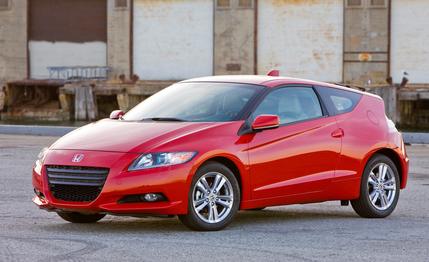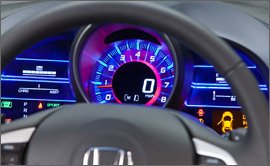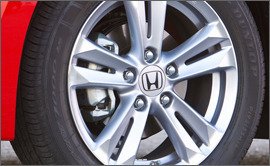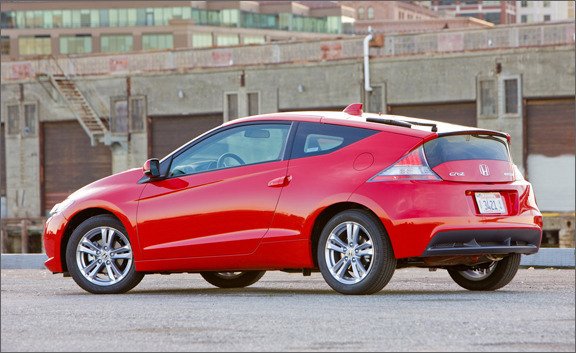 Short Take Road Test
Short Take Road Test
In essence, Honda’s new CR-Z is the incestuous love child of the fun and versatile Fit hatchback and the frugal Insight hybrid. Sharing its basic underpinnings with those cars, the two-seat CR-Z mates a 113-hp, 1.5-liter four-cylinder to the Insight’s Integrated Motor Assist (IMA) hybrid system, which combines a nickel-metal hydride battery pack and a 13-hp electric motor. Total system output is 122 hp and 123 lb-ft when routed through the CR-Z’s optional CVT; manual-transmission cars get another 5 lb-ft.
Honda is pitching the CR-Z as a sort of Dr. Jekyll and Mr. Hyde “sporty hybrid.” Accordingly—well, and because we love three-pedal cars—our coverage of the CR-Z has thus far focused on cars equipped with the six-speed manual transmission. Honda, however, expects the six-speed to account for about 25 percent of CR-Z sales. (The CR-Z is the only hybrid on the market to offer a shift-it-yourself option.) As loyal as we are to the clutch pedal, we had to strap our test gear to this CR-Z to see what sport remains in the car for the 75 percent of buyers expected to opt for the CVT.
Trading the Manual for a CVT

Trading six set gears for a continuously variable transmission—with seven programmed ratios for manumatic shifting—improved 0-to-60-mph acceleration by 0.3 second, to 9.3 seconds. By the quarter-mile mark, the two cars are essentially tied, with the CVT falling 0.1 second behind the manual car and tripping the light in 17.3 seconds at 83 mph. As expected, our CVT test car’s skidpad (0.86 g), top-speed (121 mph), and 70-to-0-mph braking (180 ft) numbers are all within spitting distance of the manual car’s. And at 2698 pounds, this car weighed just 54 more than the manual car.
Although the CVT model is slightly quicker to 60 mph, it drains much of the connection the driver feels with the car. The chassis is still competent, the steering lively and communicative, but the car already is hindered by the weight of the hybrid components, and the CVT version leaves us with bored limbs—and deaf ears from the engine droning it causes.
The CR-Z doesn’t enjoy much more success in the other half of its act. The CVT model is rated at 35 mpg city and 39 highway; over 1000 miles of mostly highway travel, we recorded 34 mpg. It’s worth noting that we’ve seen as high as 46 mpg with the Insight and low 30s from various Fits. For a two-seat hybrid, the CR-Z’s fuel economy is disappointing.
CRaZy Looks

No matter the transmission, though, the little coupe has a fun and daring shape that snags looks and starts conversations with even the most-car-blind bystanders. Inside, the starship Enterprise instrument cluster provides a wealth of information in a layout that is unique without being confusing and futuristic without being tacky. In addition, the hatchback configuration is handy for oddly shaped items, although the dramatic haunches and split rear window pinch visibility. The gearless transmission is an additional $650 on any trim level, and our top-spec EX with nav rang in at $23,960.
That price buys any number of more efficient and/or sportier rides, and measured in terms of usability, the CR-Z would make much more sense if it focused on just one of its two disparate goals. But it doesn’t, and the CVT is even less fun than the manual, placing this version of the CR-Z even further off the “sporty hybrid” mark.
